Begonias are available in so many different shapes, sizes, and colors that you may not even recognize them as begonias. With 2,000 different species and countless hybrids available, sorting through the selection to find what you are after can be challenging.
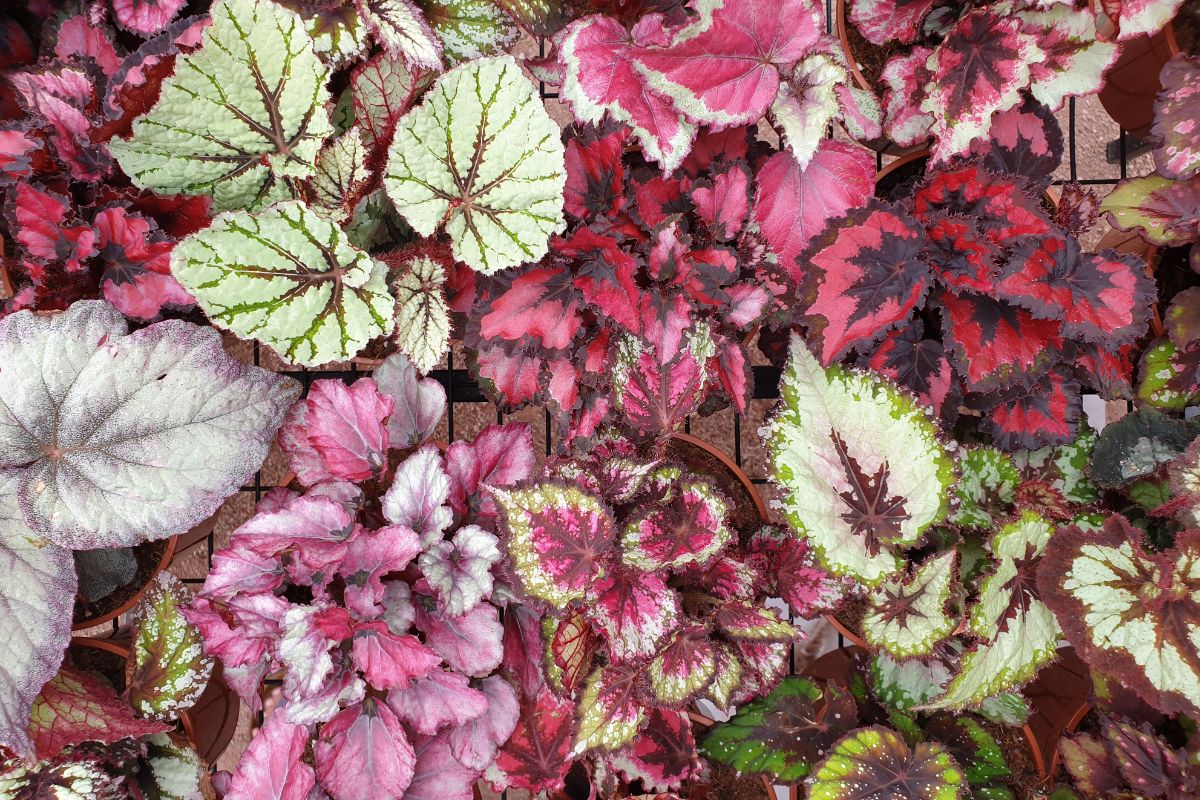
Many names categorize this large genus: wax, cane, fibrous-root, tuberous-root, trailing, hardy, rhizomatous, Rex, and more. We’ll do a brief run-down and explain propagation methods and ways to keep your begonias happy and vibrant.
If you are a begonia lover, or a beginning begonia connoisseur, learning to propagate these plants can supply the plants for your begonia dreams. For the thousands of hybrids, propagation is the only way to reproduce offspring true to the parent plant.
Jump to:
Types of Begonias
Begonia is a large genus of flowering plants native to the warmer, moist climates of Asia, the Americas, and Africa. Many sold in garden centers are hybrids of two or more species.
Not every begonia responds well to all propagation methods, so it’s helpful to outline a few different types. Check out the American Begonia Society for more information on all things begonia!
Fibrous Rooted
Begonias in this category have a root system resembling other plants, like tomatoes or rosemary.
Wax begonias
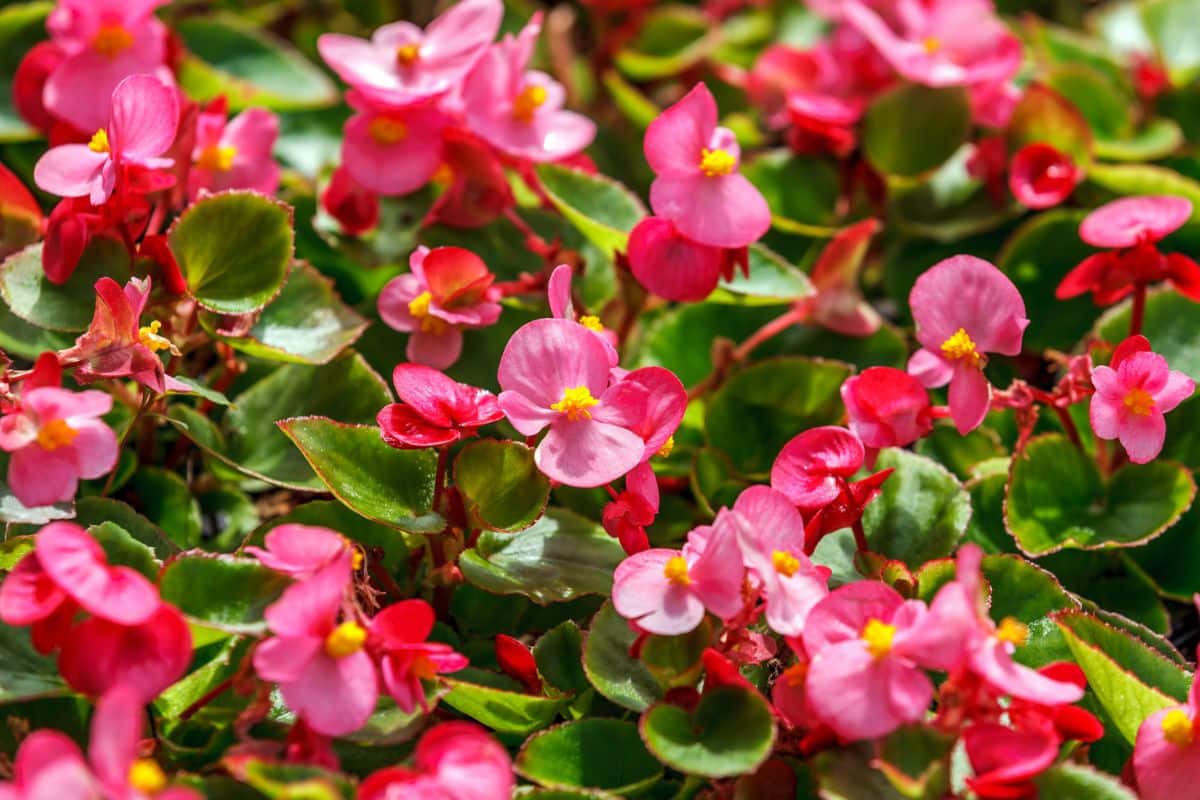
These familiar begonias are part of the fibrous-rooted grouping. They generally have waxy foliage, smaller leaves, and smaller flowers. Popular for garden beds, borders, and containers, they can be brought indoors for the winter or purchased in flats as annuals every spring.
Cane begonias
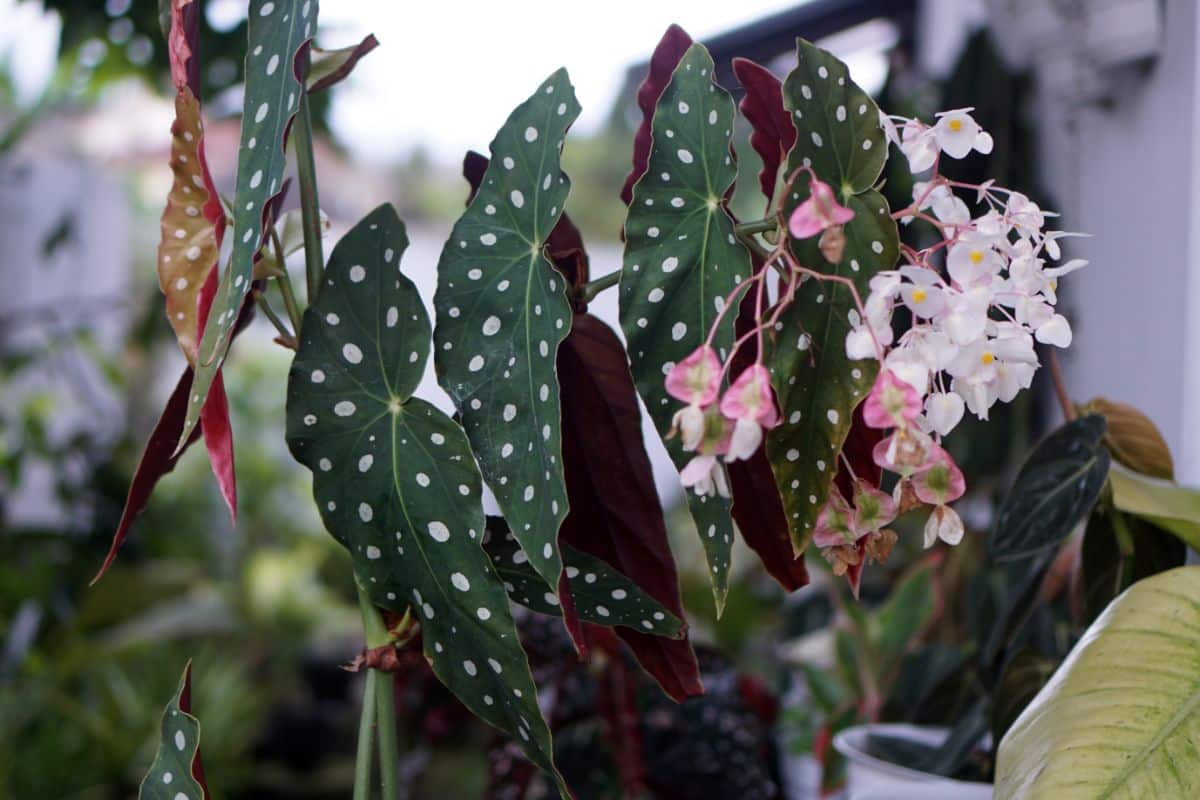
These plants are named for their upright stems, which may resemble a bamboo stalk, and their long leaves, which resemble wings. The much-desired Polka Dot Begonia (Begonia maculata) is a cane begonia. Growing up to five feet tall in the right conditions and with striking foliage, they make dramatic houseplants.
Tuberous Begonias
Many tuberous begonias are trailing and popular in hanging baskets. They will make a tuber in late summer, or early fall, which can be stored overwinter in proper conditions.
Hardy
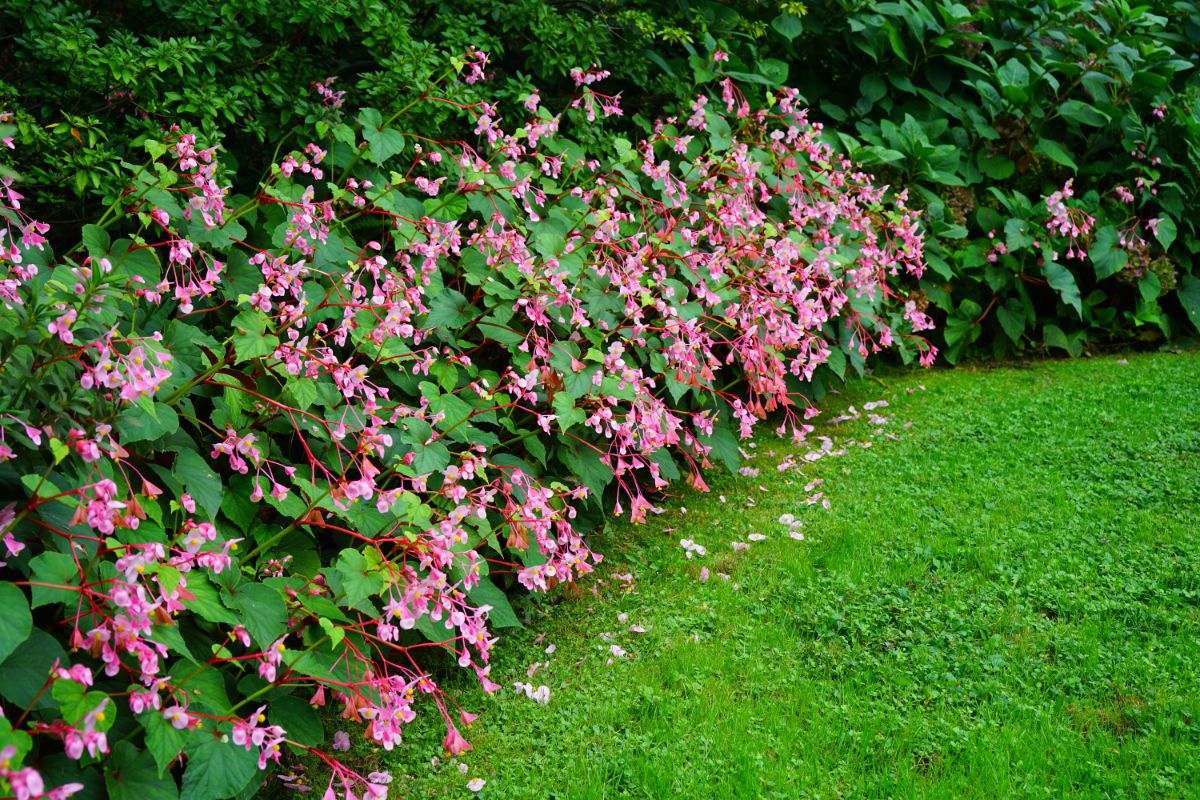
Hardy begonias, Begonia grandis, are tuberous begonias with small pink or white flowers and can tolerate being grown outside. They can overwinter down to USDA zone 6. If exposed to frost, the above-ground vegetation will die back but resprout in spring from the tuber if it wasn’t damaged by the cold.
Rhizomatous
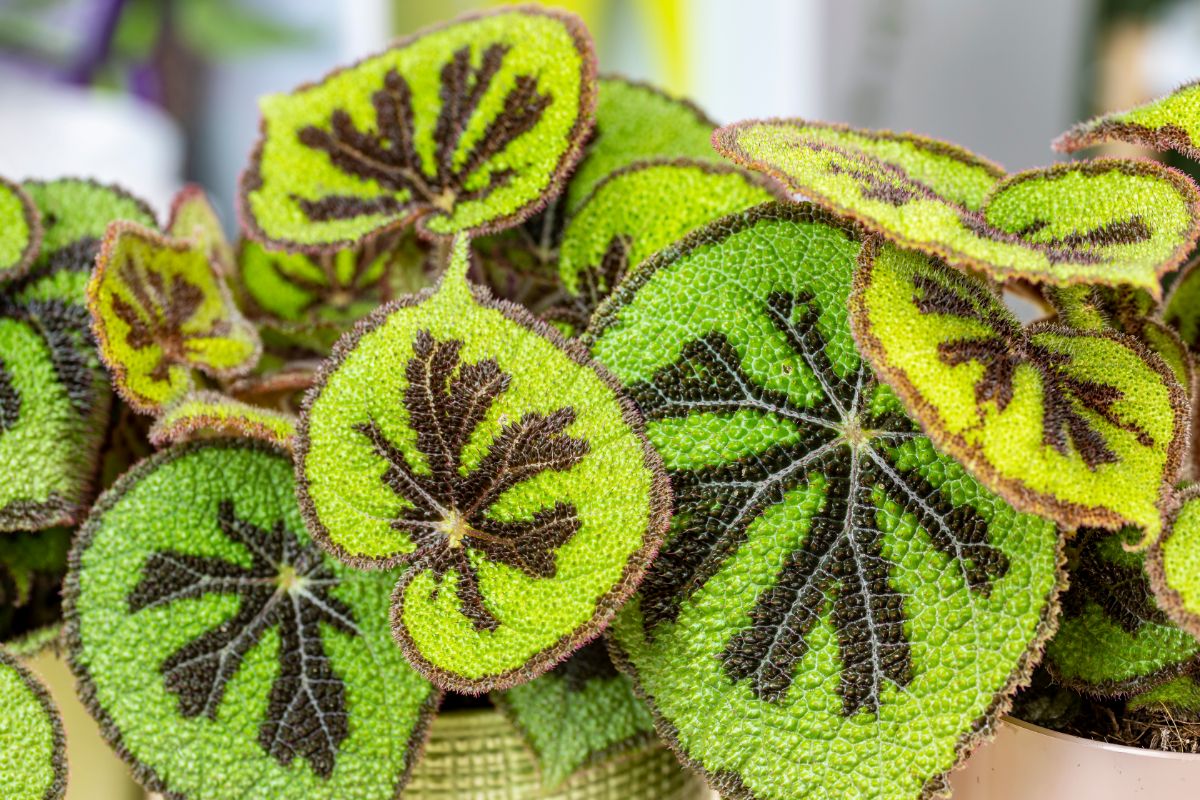
Like it sounds, these begonias have rhizomes sneaking under and above the soil surface. They make excellent houseplants and are commonly selected for their unique foliage and interest. There are many species and cultivars.
Rex
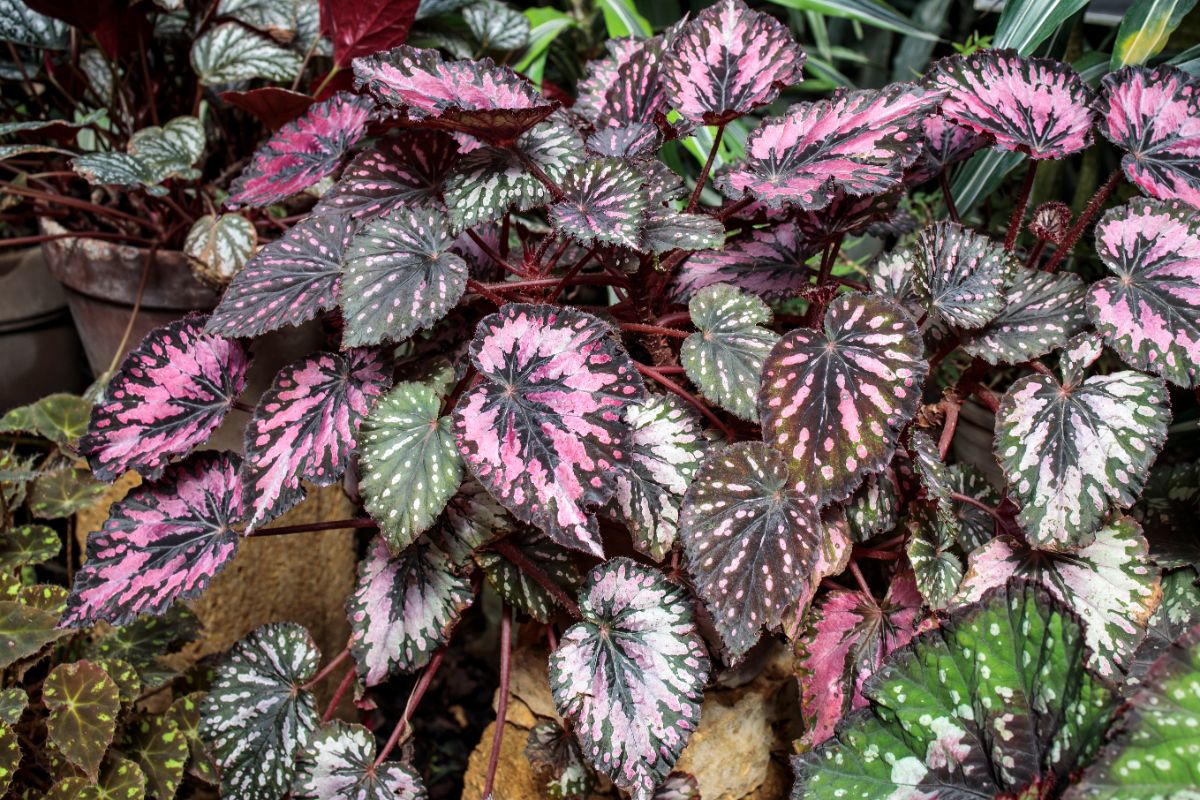
If you fell in love with a big, highly variegated, and colorfully-leaved begonia, it might be a Rex. These belong to the rhizomatous group and are famous for their foliage displays. They make stunning houseplants but can require a bit more care than some other varieties. Learn to propagate your Rex begonia, and you will have gifts to give for every occasion.
Ways To Propagate Begonias
Not every method is ideal for every type of begonia. Even some hybrids of the same category respond better to one method than another. Try out a few different ways and keep some notes on what worked best for each plant.
When taking cuttings, whether leaf or stem, the sharper the blade, the better. A razor blade is ideal for cutting vegetative tissue with minimal damage to the plant cells, allowing for quicker rooting.
How To Grow Begonias From Leaf Cuttings
Leaf cuttings can work well on Rex begonias, as well as angel-wing, rhizomatous, and tuberous begonias. Once you have a leaf, the propagation can be done with the entire (flat) leaf, a wedge of the leaf, or by removing the center to make a cone.
To take a begonia leaf cutting:
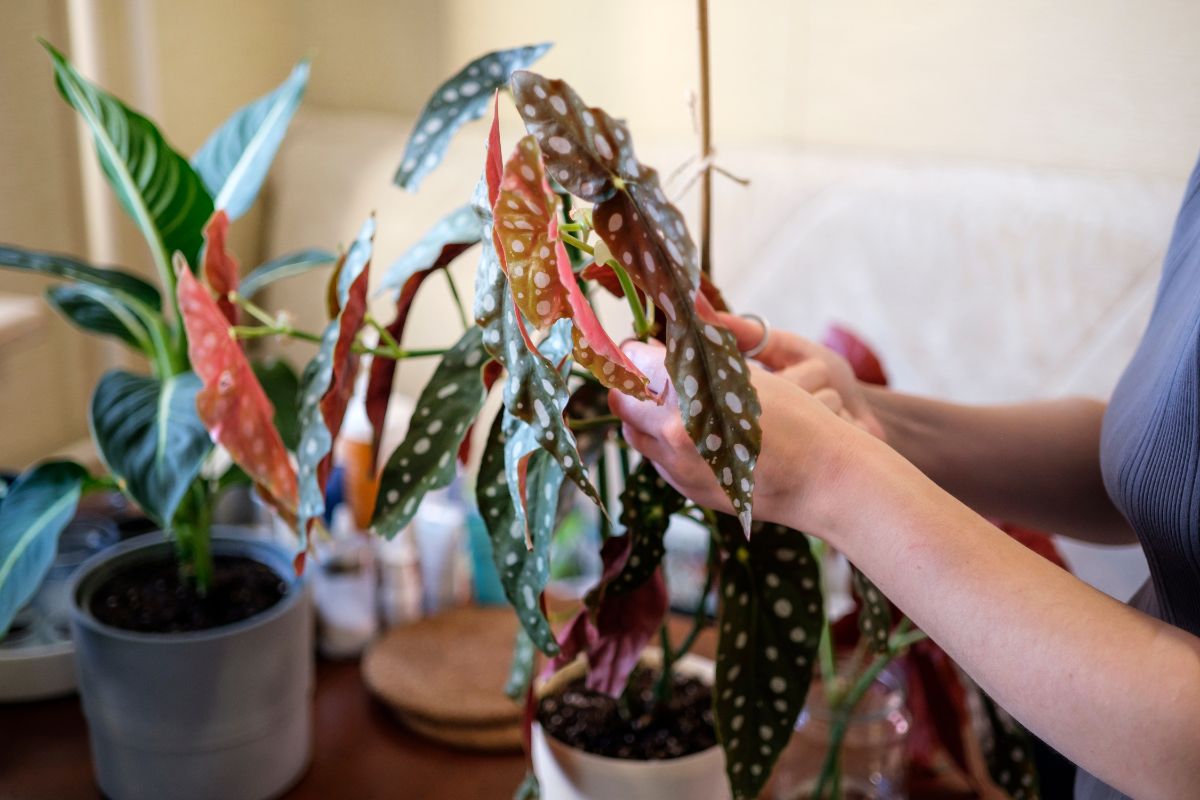
- Select a healthy, vibrant leaf. Relatively new leaves from the top of the plant work well as long as they are full-sized.
- Snip or break off the leaf a bit below where the petiole attaches.
- Flip the leaf upside down and locate the ‘main’ veins running out from the attachment point. There should be several.
- For flat-leaf propagation, remove any remaining petiole. About midway from the leaf edge to the center, break these central leaf veins by either partially folding the leaf or using a clean, sharp tool to snip them.
These breaks in the veins are where new plants will grow. Place the leaf right-side up on your propagation medium and press it gently into the soil. You may need to use a small stone or a broken bit of pottery to help hold it down so the broken veins contact the medium.
- For cone propagation, use scissors or a razor to cut all the way around the leaf halfway from the stalk to the edge, essentially making a smaller leaf and breaking the central veins in the process. It’s kind of like a donut and a donut hole.
Set aside the center and roll the remaining portion into a cone shape (this doesn’t have to be exact, just make it round so it fits in the pot). What was the upper surface of the leaf will now be the inner side of the cone.
Place it, cut side down, into the pot with your rooting medium, and push some of the mix-ups around the base of the cone to hold the leaf upright and cover the severed veins.
- For wedge leaf propagation, remove the center of the leaf, severing the main veins as in step 5 above. Cut or tear the remaining leaf into wedges, with one main vein per piece. Plant these wedges as above, severed vein down, into your mix using a little soil to hold them upright.
- Cover the container with a transparent lid, plastic bag, or plastic wrap to keep the humidity high, and set it out of the way in a bright warm place.
Don’t throw away those leaf centers with a bit of petiole that you trimmed off for the wedge and cone methods. They can also be stuck into the medium, similar to a traditional stem cutting, except you are not using nodes. Some begonias will readily root this way as well. Give it a shot.
How to Propagate Begonias from Stem Cuttings
Cane begonias are better propagated by taking and rooting stem cuttings, but it works well for almost all begonias. For best success, take stem cuttings from the tip where new growth is vigorous and healthy.
To take a stem cutting:

- Select a piece of stem with 2 nodes that have not had a bloom and a leaf or two. Nodes are where leaves attach or would attach. They may look like lines across the stem or like bumps.
- Cut half an inch below the chosen bottom node with a clean, sharp tool, ensuring the node is not damaged. Root your cutting in soil or water following the directions below. If your cutting has more than two leaves, trim the others off.
If rooting stem cuttings in water:
- Place the new cutting in a small, clear-walled container filled with water. Make sure the nodes are submerged but not the leaves. Use a small vessel that will keep the plant upright. Don’t use a quart jar for a single stem.
Tip: If your tap water is treated with chlorine, and you experience trouble rooting cuttings in water, try another water source. Some municipalities treat their water heavily with chemicals.
- Change the water every week to keep it fresh, and keep the jar in a brightly lit and warm spot out of direct sunlight.
- Roots will grow in 1-4 weeks, depending on the plant’s vigor and the environment. Once the roots have been established, transplant your new begonia into a moist potting mix. Take care not to break off the fragile new roots.
If rooting stem cuttings in soil or another medium:
- Fill a container with a well-moistened potting mix or a mix of perlite and coco fibers.
- Dip the freshly cut stem end in the rooting hormone for the best results.
- Stick your cutting in the pot deep enough to cover the node where the roots will develop. Ideally, two nodes will be buried.
- Firm the medium around the stem and place it in a bright location. A window that receives indirect sunlight or morning-only sunshine will work.
- In 3-4 weeks, you can check the progress of your new plants’ roots by gently giving the stem a little tug. New vegetative growth is another good sign of success.
Using a humidity bag or other cover to keep the cuttings from drying out will increase your success. Bread bags, large freezer bags, and other items can be used if you don’t have a large humidity dome to stick your cuttings in.
How To Propagate Begonias From Rhizome (root) Cuttings
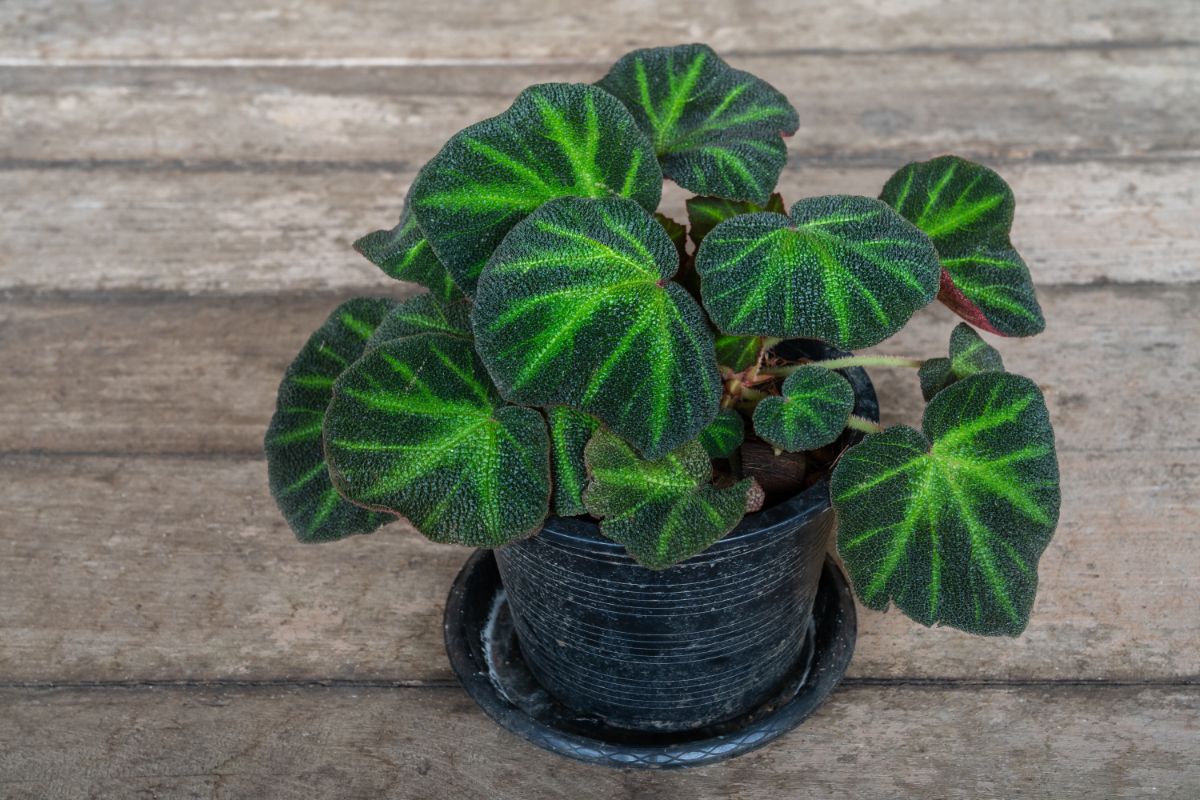
Some begonias have rhizomes, and propagating begonias from rhizomes gives you faster results. Of course, this won’t work for non-rhizome types. It is really quite simple.
- Select a piece of rhizome and trim it off with a sharp tool. Don’t worry about having nodes or buds.
- Cut the rhizome into pieces about an inch or two long. If it has a leaf, that is fine.
- Bury about half of the rhizome in your moist potting or propagation mix in a tray or small pot.
- Like other methods, keep the humidity level high and don’t let the soil dry out. But don’t make an artificial swamp, either.
- Once new growth emerges from the rhizome, care for it until the plant is well established, then transplant it to its next home.
Tips For Growing Begonias
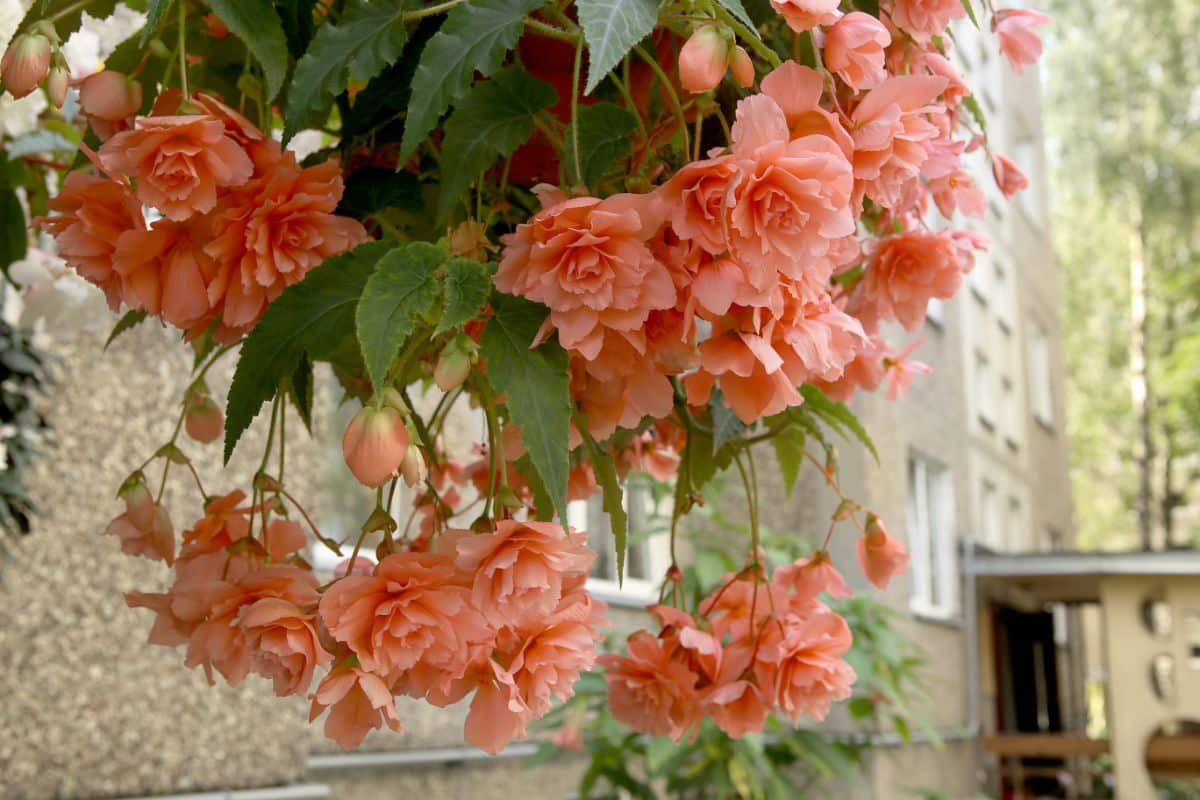
With so many different types of begonias, no one hard fast rule applies. However, a few general guidelines for healthy begonias are as follows:
Moist but not Wet
Begonias don’t like to dry out between waterings like some other houseplants. Add some compost and coco fiber to help the soil hold water, but ensure the containers have adequate drainage.
Sitting in water can cause root rot, fungus gnats, and other problems. If growing your begonias outdoors in a garden bed, mulching around the base can help the soil stay moist between rain showers. Drip line irrigation or hand watering in dry spells is recommended.
Avoid Getting a Sunburn
While some begonias will tolerate more sun than others, they don’t do well in full afternoon shine. Plant them in dappled shade or where they will get morning sun but afternoon shade.
If in the house, put them a little farther back from a south-facing window so they are not getting the full brunt of the sun. North-facing windows are perfect, as are other bright spots in the home.
Don’t let your begonias Catch a Cold
Except for hardy begonias, frost and freezing temperatures are not okay. These tropical plants do not react well to cold weather. Watch the forecast in spring and fall, and bring them inside if needed. Wait to plant outdoor begonias in spring until a couple of weeks after your last frost.

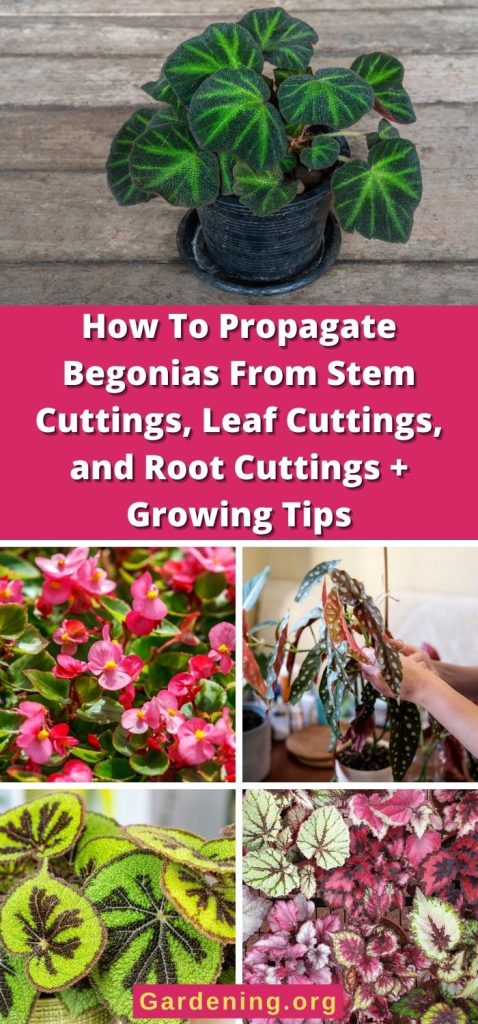
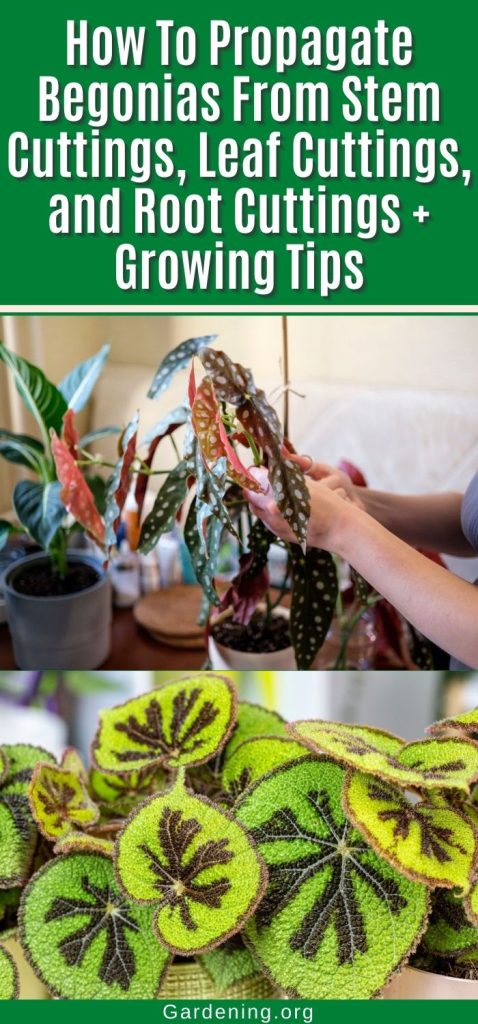
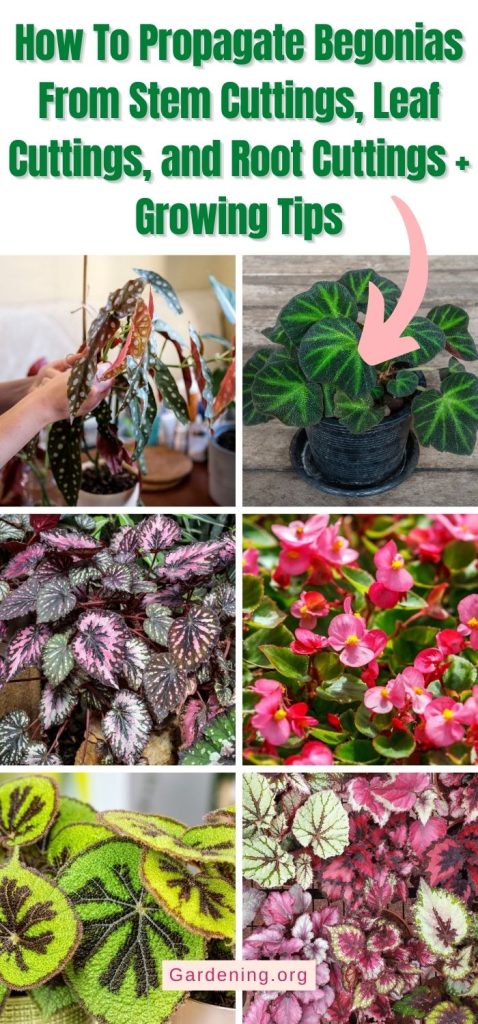
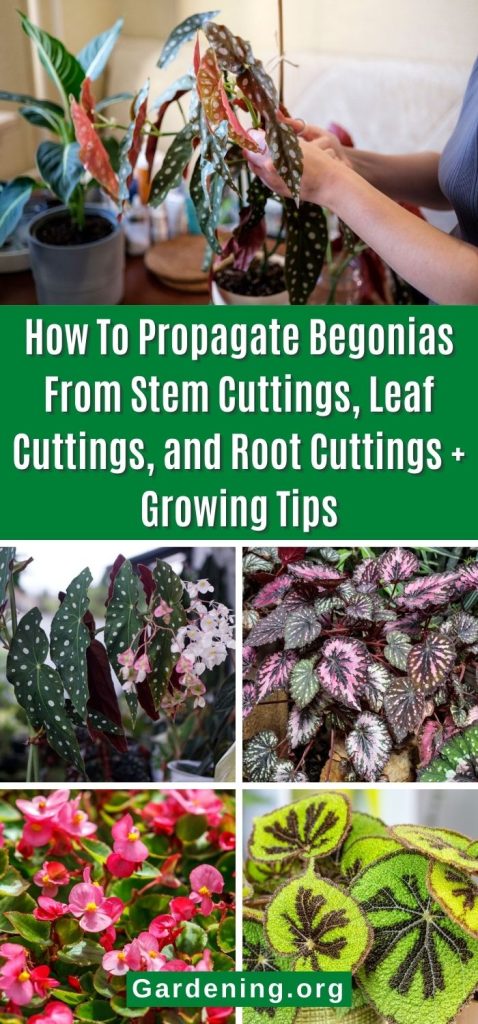




Lorelei Quiding
Very helpful information